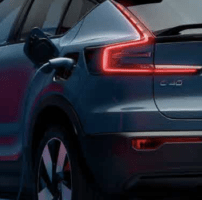The cost to fuel electric vehicles in the United States is higher than gas-powered cars for the first time in 18 months, says, Anderson Economic Group (AEG), a consulting company.
“In Q4 2022, typical mid-priced ICE (Internal Combustion Engine) car drivers paid about $11.29 to fuel their vehicles for 100 miles of driving. That cost was around $0.31 cheaper than the amount paid by mid-priced EV drivers charging mostly at home, and over $3 less than the cost borne by comparable EV drivers charging commercially,” said in an analysis.
However, luxury EVs still enjoy a cost advantage against their gas-powered counterparts.
It costs luxury EV owners $12.4 to drive every 100 miles on average if they charge their cars mostly at home or $15.95 if they charge their cars mostly at commercial charger stations in the 4th quarter of 2022.
Meanwhile, the fuel costs for luxury gas-powered cars are $19.96 per 100 miles on average.
The fuel costs in the analysis are based on real-world U.S. driving conditions including the cost of underlying energy, state taxes charged for road maintenance, the cost of operating a pump or charger, and the cost to drive to a fueling station, AEG said.
The Study
East Lansing, MI–January 24, 2023: 2022’s final quarter brought relief at the pump for drivers of traditional Internal Combustion Engine (ICE) vehicles as the cost to drive 100 miles dropped by more than $2. With the cost for electricity also trending upward during the year, mid-priced ICE cars became more economical to fuel than their Electric Vehicle (EV) counterparts for the first time in 18 months.
In Q4 2022, typical mid-priced ICE car drivers paid about $11.29 to fuel their vehicles for 100 miles of driving. That cost was around $0.31 cheaper than the amount paid by mid-priced EV drivers charging mostly at home, and over $3 less than the cost borne by comparable EV drivers charging commercially.
Drivers of luxury EVs continued to a fueling cost advantage, regardless of charging method.
Findings by Vehicle Type
- Mid-priced vehicles–In this market segment, fueling ICE vehicles was more economical than comparable EVs in the 4th quarter, regardless of charging primarily at home or commercially.
- Luxury cars-Drivers of high-end electric vehicles still enjoyed a significant fueling cost advantage, but the gap narrowed in Q4. Assuming mostly home charging, the cost benefit to fuel a luxury EV vs. a luxury ICE car dropped from $11.20 per 100 miles to $7.56.
- Pickup trucks, entry-priced cars–ICE vehicles are still the only widely available options in these two segments.
Cost Comparison Over Time


Approach
Anderson Economic Group calculates all four categories of costs for fueling EVs and ICE vehicles across benchmarks representing real-world U.S. driving conditions, including:
- The cost of underlying energy (gas, diesel, electric)
- State excise taxes charged for road maintenance
- The cost to operate a pump or charger
- The cost to drive to a fueling station (deadhead miles)
All use cases reflect 12,000 miles/year, with the cost of residential charging equipment amortized over five years. Calculations are based on energy prices and taxes in the state of Michigan. Benchmarks for ICE vehicle drivers assume the use of commercial gas stations. For EV drivers, we consider both drivers who routinely charge at home and those who rely primarily on commercial chargers.
AEG Expert Commentary
“The run-up in gas prices made EVs look like a bargain during much of 2021 and 2022,” says AEG’s Patrick Anderson. “With electric prices going up and gas prices declining, drivers of traditional ICE vehicles saved a little bit of money in the last quarter of 2022.”
AEG is a consulting firm based in Michigan that offers research and consulting in economics, valuation, market analysis, and public policy, according to the company’s website.

